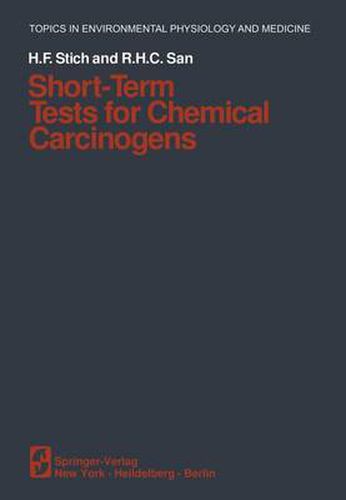Readings Newsletter
Become a Readings Member to make your shopping experience even easier.
Sign in or sign up for free!
You’re not far away from qualifying for FREE standard shipping within Australia
You’ve qualified for FREE standard shipping within Australia
The cart is loading…






This title is printed to order. This book may have been self-published. If so, we cannot guarantee the quality of the content. In the main most books will have gone through the editing process however some may not. We therefore suggest that you be aware of this before ordering this book. If in doubt check either the author or publisher’s details as we are unable to accept any returns unless they are faulty. Please contact us if you have any questions.
The recent surge of interest in designing, validating, and implementing short-term tests for carcinogens has been spurred by the fairly convincing correlation be tween the carcinogenicity and mutagenicity of chemicals and physical agents and by the assumption that DNA alteration, mutations, and chromosome aberrations are somehow involved in neoplastic transformation. Moreover, it has been tacitly assumed that the mutagenic capacity alone of compounds would induce regulatory agencies to pass rules for their removal from the environment and would lead the public to avoid them. The actual response, however, is quite different. Governmental departments shy away from making any decisions on the basis of in vitro test systems. The public at large is becoming irritated by daily an nouncements that many of their cherished habits could adversely affect their health. Industry appears to feel threatened and may reduce its search for new beneficial chemicals. The reluctance to accept wholeheartedly the mutagenicity tests for the detection of carcinogens is partly due to uncertainty about the in volvement of mutations in neoplastic transformation, partly due to the present difficulty of extrapolating results from various endpoints obtained on numerous organisms to man, and partly due to a multitude of complex events that lead in vivo to the evolvement of benign or malignant tumors.
$9.00 standard shipping within Australia
FREE standard shipping within Australia for orders over $100.00
Express & International shipping calculated at checkout
This title is printed to order. This book may have been self-published. If so, we cannot guarantee the quality of the content. In the main most books will have gone through the editing process however some may not. We therefore suggest that you be aware of this before ordering this book. If in doubt check either the author or publisher’s details as we are unable to accept any returns unless they are faulty. Please contact us if you have any questions.
The recent surge of interest in designing, validating, and implementing short-term tests for carcinogens has been spurred by the fairly convincing correlation be tween the carcinogenicity and mutagenicity of chemicals and physical agents and by the assumption that DNA alteration, mutations, and chromosome aberrations are somehow involved in neoplastic transformation. Moreover, it has been tacitly assumed that the mutagenic capacity alone of compounds would induce regulatory agencies to pass rules for their removal from the environment and would lead the public to avoid them. The actual response, however, is quite different. Governmental departments shy away from making any decisions on the basis of in vitro test systems. The public at large is becoming irritated by daily an nouncements that many of their cherished habits could adversely affect their health. Industry appears to feel threatened and may reduce its search for new beneficial chemicals. The reluctance to accept wholeheartedly the mutagenicity tests for the detection of carcinogens is partly due to uncertainty about the in volvement of mutations in neoplastic transformation, partly due to the present difficulty of extrapolating results from various endpoints obtained on numerous organisms to man, and partly due to a multitude of complex events that lead in vivo to the evolvement of benign or malignant tumors.